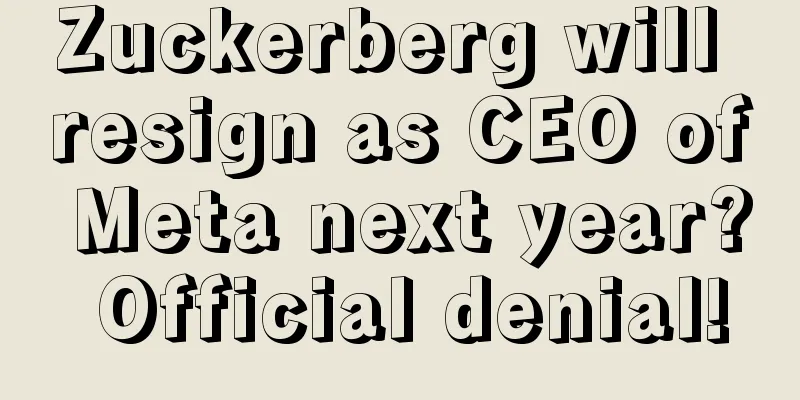Temu and Shein receive investment? E-commerce battle, who will win this war?

|
01 Join forces with technology giants? ✦ According to reports, Facebook is pushing forward its investment in Temu and the two parties are communicating on equity and other matters. It seems strange everywhere: Temu is clearly using Facebook to advertise, so how can the second party invest in the first party? But if you think about it carefully, it does make sense: Temu, which just went public last year, has been spending a lot of money to seize the market, spending 500 million dollars on advertising every month. The highest amount is on Facebook, with a daily advertising volume of up to 10 million dollars. In recent years, Facebook's advertising revenue has fallen sharply due to the IOS privacy protection policy. Temu's advertising investment just makes up for this loss. If Temu's orders fluctuate, it may even affect Amazon's market value. Amazon and Temu prosper together and suffer together, so it is natural for Amazon to pay attention to and invest in Temu's development.
Coincidentally, this symbiotic relationship is not unique in the cross-border circle. Recently, Microsoft has also begun to invest in Shein , and Shein has migrated its central site and US site from Amazon AWS cloud to Microsoft cloud, and is no longer controlled by Amazon. It can be seen that the alliance between domestic e-commerce giants and American technology giants has become a new development trend. Technology is power, which is fully reflected in the cross-border circle: money means power. 02 A siege on Amazon or a multi-party melee? ✦ As the cross-border e-commerce market becomes more and more complex and chaotic, and as various platforms mature, frictions and conflicts continue. First of all, there is Amazon, which has been a leader in foreign markets for many years, and new Chinese platforms such as AliExpress, Shein, Temu, and TokTik. In 2023, each company will continue to adjust its strategy to seize the track that is beneficial to itself. Especially Shein and Temu, under the attack of the two, the number of daily users of Amazon app has decreased by 8 million since 2023. But in fact, the two did not take advantage of the opportunity to join forces to deal with Amazon, but fought each other first. On July 14, Temu accused Shein of using its market distribution power to force clothing manufacturers to sign exclusive agreements with it and prevent them from cooperating with Temu to monopolize the market. But long before that, Shein had already raised his fist against Temu, accusing him of secretly instigating internet celebrities to attack him on social networks.
The two companies are fighting overtly and covertly, trying to push each other down instead of pulling themselves up. They both came from China, and they share the same roots, so why are they so eager to fight each other? To talk about the fuse, we have to start with the operating models of the two companies. Temu: Buying customers with money Temu started from scratch by relying on internal competition and burning money, and used "low-price market grabbing and heavy investment" to grab market share. The main focus is subsidies and cheapness. Imagine that socks that sell for ten dollars elsewhere are sold for five dollars for three pairs at Temu. Such prices are bound to quickly capture the low-end and mid-range consumer market. The bottom-price sales model is not suitable for ordinary merchants, who usually sell directly from the factory and make profits by selling large quantities of goods in the form of small profits but quick turnover. Shein: Small order quick return model Shein has long been called an "invisible unicorn". As one of the earliest Chinese platforms to go overseas and develop successfully, its core competitiveness lies in its sales model and platform model. "Shein is not only a platform, but also a chain leader," said Li Mingtao, chief e-commerce expert at the China International Electronic Commerce Center. "Shein's core competitiveness is specifically the front-end consumer insight and the ability to judge consumer trends; the other is the fast industrial chain model of small orders and fast returns." Small orders and fast returns means reducing time and material costs, producing different styles in small batches, and testing the hot-selling return orders. According to data from Zhongtai Securities, Shein can launch 4-5 new SKUs a week, and the hot-selling rate can reach 50%. Moreover, Shein has its own stable supply chain, which is deeply connected with the clothing industry in Panyu, Guangdong, with hundreds of core suppliers and more than a thousand ordinary suppliers. Therefore, the price can be kept to the lowest. Competing on the same stage Compared to Amazon, which has the widest product and customer categories, Temu and Shein have the same customer base, and there are many frictions between the two in the low-price market and product marketing. For example, Shein's main clothing category is also one of Temu's most important sales categories. The supply chains of the two parties also overlap a lot. It is not surprising that the two companies can fight. 03 The smoke of war is everywhere, who will be the winner in the end? ✦ Who will win and who will lose when the contradictions collide? One is a cross-sea newcomer that just went online last year, and the other is a start-up with experience that has gradually become the steady champion today. If you want to determine the winner, both sides actually have their own advantages and disadvantages. Since last year, Temu has been rapidly expanding overseas by burning its own energy. It has indeed made a name for itself, but its weaknesses and disadvantages have also gradually emerged: Huge loss. According to insiders, the current parcels sent to the United States lose about $30 per order. At the same time, the industry generally recognizes that the data for February this year is: an average of 200,000 orders per day, with a peak of 500,000. If calculated based on "200,000 orders per day", Temu will lose $2.16 billion for the whole year, equivalent to RMB 15 billion. Temu said it will invest $1.4 billion in advertising this year and $4.3 billion next year. Only large platforms dare to invest money in such a bottomless pit, but if they cannot receive foreign exchange returns for a long time and just keep investing money, even the largest companies will not be able to withstand it. One can't help but ask: where does your money come from? "Can you still have a promotion at such a low price?" “Yesterday I saw a Temu seller was fined 200,000 RMB.” "It proves the saying: free is the most expensive." Exploitation of platform sellers. "Where does the money come from?" If you can't make money from the buyers, you have to make it up from the sellers. Temu has the right to set prices for the goods. If the sellers do not follow the price change suggestions given by the platform, they may drop in ranking and sales. If they want to change the price, they will cut it down several times. A small department store that doesn't make much money in the first place will have to cut it down to 1688 wholesale price. At the same time, the platform's product inspection and after-sales service are very abnormal. If there is any defect, it will be rejected, and there will also be a sky-high fine. If you are not a large manufacturer, it is difficult to bear the platform's tossing. In contrast, Shein, as a long-established platform, has been making steady progress. If there is a drawback, it should be that sellers are invited to join and the sales function is cumbersome. Although these two points are troublesome, they play a good role in protecting the reputation of the platform and the quality of goods. Although like Temu, it is also a sales war, but Shein is more attentive. |
<<: A large number of sellers have had their brands removed. What exactly is the problem?
>>: Sellers, please note! Amazon tightens its policies again!
Recommend
What is Kakaku? Kakaku Review
Kakaku is a Japanese e-commerce product informatio...
What is Marmalead? Marmalead Review
Marmalead Keywords are very important for SEO. Mar...
What is Seller Republic? Seller Republic Review
Seller Republic is a simple, fast and smart tool f...
Mercari becomes first zero-commission resale platform in the U.S.
It is learned that according to foreign media repo...
What is the US DOT? US DOT Review
DOT is the abbreviation of the US Department of Tr...
Primeday ended successfully! Sellers should develop new products as soon as possible
This year's Prime Day officially ended in the...
What is Tao Data? Tao Data Evaluation
Tao Data is affiliated to Hangzhou Maijia Technolo...
What is MiKuai ERP? MiKuai ERP Review
Mijingtong Cross-border E-commerce ERP is a must -...
Amazon keeps reporting errors when modifying titles, here is a solution!
Have you seller friends encountered such problems...
What is CashCowPro? CashCowPro Review
CashCowPro is a comprehensive Amazon management to...
Walmart's overseas GMV reached US$200 billion in five years. Where does its confidence come from?
It is learned that on June 2, Walmart Internationa...
Walmart seller benefits are coming again, and logistics costs are reduced again!
In order to improve transportation efficiency, Wa...
Amazon, a "convicted monopoly criminal", abandons multiple affiliated brands
Amazon faces antitrust lawsuit Some sellers said ...
Big news! The US bill has been enacted, will 3C sellers be hit hard?
Recently, the United States signed the Chips and ...









